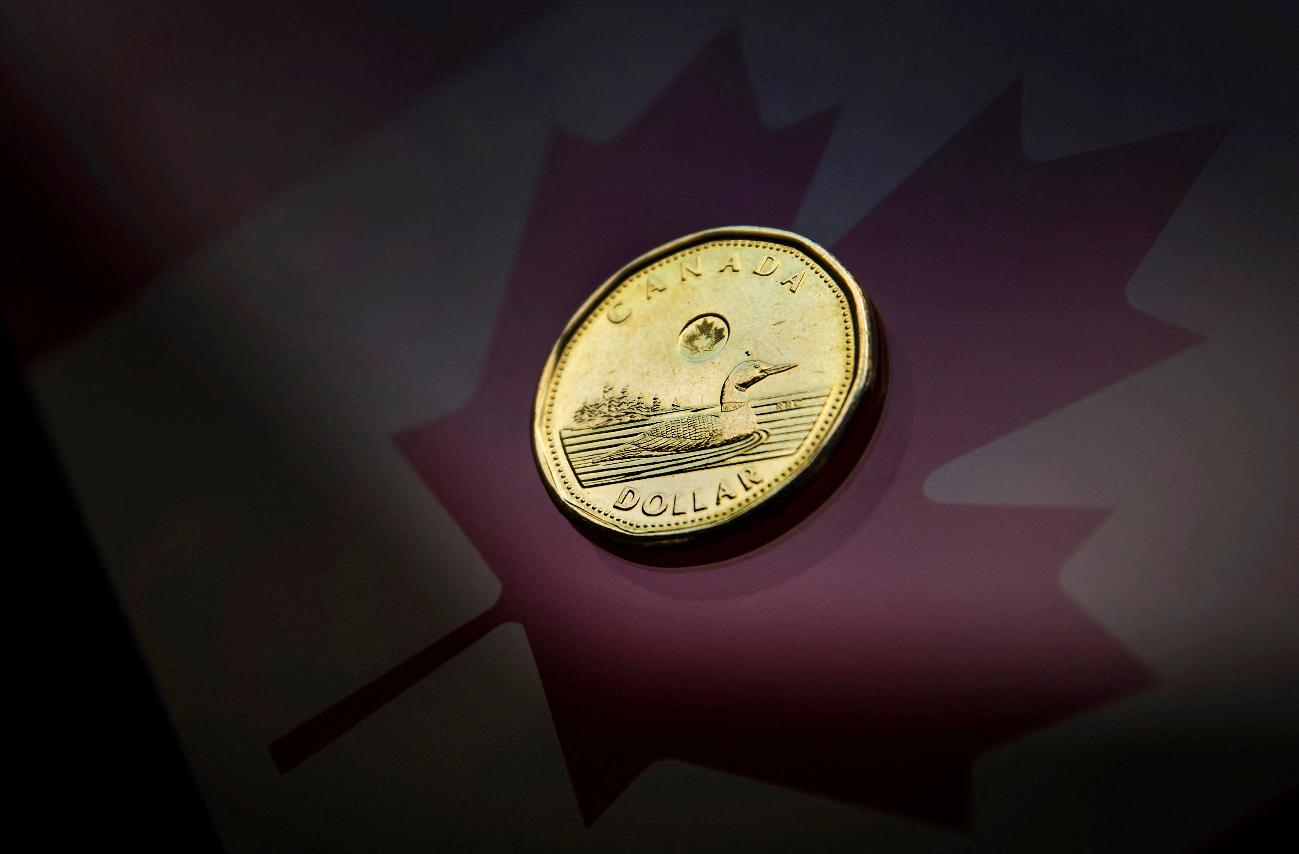
2024-09-17 16:36
Canadian dollar weakens 0.1% against the greenback Trades in a range of 1.3581 to 1.3616 Canada's annual inflation rate slows to 2% Bond yields rise across the curve TORONTO, Sept 17 (Reuters) - The Canadian dollar edged lower against its U.S. counterpart on Tuesday as domestic inflation data suggested to some investors that the Bank of Canada could match a potential supersized interest rate cut by the Federal Reserve. The loonie was trading 0.1% lower at 1.3595 per U.S. dollar, or 73.56 U.S. cents, after trading in a range of 1.3581 to 1.3616. The currency has been in a holding pattern since last Wednesday when it touched a three-week low at 1.3622. "CAD's performance is hamstrung by market thinking that the BoC's policy outlook hinges to some extent on the Fed's at this point," Shaun Osborne, chief currency strategist at Scotiabank, said in a note. The U.S. dollar (.DXY) , opens new tab hovered near its lowest levels of the year against a basket of major currencies, a day before the expected start of a U.S. easing cycle that markets are wagering may begin with a half-percentage-point reduction in rates, rather than a quarter-point move. Canada's annual inflation rate slowed to 2% in August from 2.5% in July, matching the BoC's inflation target and marking the coolest pace since February 2021. Analysts had expected inflation to slow to 2.1%. "The details of the August release provide further evidence that the inflation battle is almost won and will serve to increase speculation that the Bank might soon cut by a larger 50 bp (basis points)," Stephen Brown, deputy chief North America economist at Capital Economics, said in a note. Investors see roughly 100 basis points of easing in total in the final three BoC meetings of 2024, implying at least one move in excess of 25 basis points. Canadian bond yields rose across the curve, tracking moves in U.S. Treasuries after an unexpected increase in U.S. retail sales. The 2-year was up 3.1 basis points at 2.915%. Sign up here. https://www.reuters.com/markets/currencies/c-dips-inflation-data-fuels-boc-upsized-rate-cut-talk-2024-09-17/

2024-09-17 12:51
Core price measures ease to 40-month lows in August Consumer prices fall on a monthly basis Cost of rent rises 8.9% from 8.5% in July OTTAWA, Sept 17 (Reuters) - Canada's annual inflation rate reached the central bank's 2% target in August, data showed on Tuesday, fuelling hopes for a 50-basis-point interest rate cut by the country's central bank next month. The consumer price index posted its smallest rate of increase since February 2021 and the closely watched core price measures also cooled to their lowest levels in 40 months, Statistics Canada said. Consumer prices fell 0.2% on a month-on-month basis, it said. "We expect central bankers to slash their policy rate by 50 basis points next month in an effort to expedite the return to a more neutral setting," Royce Mendes, head of macro strategy at Desjardins Group, wrote in a report. A neutral setting is when the policy rate is around the so-called neutral rate of interest, which is between 2.25% and 3.25% in Canada, a range where interest rates are neither restricting nor stimulating growth. Analysts polled by Reuters had forecast the consumer price index (CPI) would cool to 2.1% from 2.5% in July on an annual basis, and expected it to be unchanged on a monthly basis. At the Bank of Canada's monetary policy decision announcement earlier this month, Governor Tiff Macklem said the central bank had to increasingly guard against the risk that inflation could fall below its target as economic growth was weak. Economic growth in Canada has been losing steam, with the gross domestic product in the third quarter likely to fall to half of the BoC's forecast. Unemployment has also fallen to a seven-year low barring the pandemic years of 2020 and 2021. "The gradual rise in the unemployment rate and slowing pace of economic growth ... suggest high interest rates are working to cool the economy. In fact, maybe they're working too well," said Randall Bartlett, senior director of Canadian economics at Desjardins. "We think the BoC is likely to cut the policy rate by 50 basis points at its October announcement," he added. The BoC has reduced its key policy rate three times in a row, cutting it by a cumulative 75 basis points to 4.25%. Money markets are fully pricing in 25-basis-point rate cuts at each of the last two monetary policy meetings of 2024. Expectations of a 50-basis-point cut next month rose to 47.5% from 46% before the data on Tuesday were released. LOWER GASOLINE PRICES The easing of price pressures was primarily helped by a drop in the prices of gasoline, telephone services and clothing and footwear, while shelter costs - mortgage and rents - continued to cool at a tepid pace as rents maintained their relentless rise. The Canadian dollar edged lower to C$1.3589 to the U.S. dollar, or 73.59 U.S. cents. The BoC had predicted annual inflation to be at 2.6% this year and fall to 2.4% next year before coming down to its mid-point of the target range of 1-3% in 2026. CPI-median - or the price change located in the middle of the CPI basket - slowed to 2.3% in August from 2.4% in July annually. CPI-trim - which excludes the most and the least volatile price items - cooled to 2.4% from 2.7%. Gasoline prices, which contributed the most to the fall in inflation, fell by 5.1% and those for clothing and footwear fell by 4.4%. Shelter costs, which account for close to 30% of the CPI basket, rose 5.2% in August, from 5.7% in July, primarily led by mortgage interest costs and rents. Mortgage interest costs slowed to 18.8% in August from 21% in July, while rents rose 8.9% from 8.5%. Mortgage interest costs and rent remained the largest contributors to the increase in the CPI in August, Statscan said. Sign up here. https://www.reuters.com/world/americas/canadas-inflation-cools-2-aug-reaches-central-banks-target-2024-09-17/

2024-09-17 12:48
Sept 17 (Reuters) - Battery-electric cars (BEVs) sold in the European Union are set to reach a total market share of between 20% and 24% by 2025, mostly because of cheaper selling prices, campaign group Transport & Environment (T&E) said on Tuesday. EV sales in the EU have slowed in recent months - to a 14% market share in the first half of the year - in part due to diverging policies on green incentives across the bloc, while regulators, seeking to protect EU industry, have imposed hefty tariffs on Chinese cars. Germany, the European Union's largest EV market, in September introduced incentives to speed up the green transition. T&E, which in June had forecast a 21% share for next year, anticipates sales will pick up. It said its new projections take into account the expected arrival in 2024 and 2025 of seven new fully-electric models priced under 25,000 euros ($27,835.00), accounting for 10%-15% of the BEV market next year. BEVs should contribute about 60% of the carbon dioxide (CO2) reduction that carmakers require to achieve EU emissions targets next year, while hybrid options could contribute 20% of emission reductions, it said. Facing a drop in EV demand and increased competition from cheaper Chinese rivals, European manufacturers have urged EU lawmakers to activate a crisis clause that would postpone their CO2 targets by two years. T&E said lawmakers should resist any moves to weaken or delay 2025-2030 targets and electrification should be underpinned by robust national policies. "The current lead enjoyed by Chinese EV makers only shows that the longer the EU protects its laggard automakers, the less competitive they will be", T&E said. Automakers such as Stellantis (STLAM.MI) , opens new tab, Toyota (7203.T) , opens new tab, Renault (RENA.PA) , opens new tab, and Mercedes-Benz (MBGn.DE) , opens new tab have adjusted their electrification targets downward. ($1 = 0.8981 euros) Sign up here. https://www.reuters.com/business/autos-transportation/evs-could-reach-24-eu-car-market-share-by-2025-te-says-2024-09-17/

2024-09-17 12:47
Sept 17 (Reuters) - OUTsurance Group's (OUTJ.J) , opens new tab, shares hit a record high on Tuesday after South Africa's third-largest insurer by value reported a 20% jump in profit and declared a special dividend. The insurer said its normalised earnings per share (NEPS) for the year ended June 30 rose to 3.54 billion rand ($201.1 million) from 2.94 billion rand previously. OUTsurance declared a final dividend of 113.2 cents per share and a special dividend of 40 cents per share, bringing the final payout for the year to 214.4 cents per share, an increase of 49.6% from last year. Shares in OUTsurance were up 9% at 1205 GMT, reaching their highest level since it listed in 2022. OUTsurance said the special dividend was from surplus funds which were held by Rand Merchant Investment Holdings Limited, its former parent company. The property and casualty insurance specialist recorded a 20.5% rise in gross written premiums at its Australian and South African operations. The South African business' earnings grew by 17.4% compared to the previous year, on the back of improved claims ratios. Its Youi unit in Australia reported a 12.8% increase in normalised earnings, despite severe weather conditions which led to high natural disaster claims. The group's claims ratio increased from 54.3% to 56.8%, mainly due to the Australian impact. Meanwhile, OUTsurance Ireland, which launched in May 2024, incurred 180 million rand in start-up losses for the year. "We are flagging a five year timeline on Ireland breaking even, similar to what we did with Australia, because it takes time to build a trusted brand," OUTsurance Chief Executive Officer Marthinus Visser told a conference call. Sign up here. https://www.reuters.com/business/finance/safrican-insurer-outsurance-profit-up-20-boosts-dividend-2024-09-17/

2024-09-17 12:43
MILAN, Sept 17 (Reuters) - Italy's Edison (EDNn.MI) , opens new tab is interested in participating in a government project to develop new generation nuclear power in the country, the chief executive of France's EDF subsidiary said on Tuesday. Earlier this month Industry Minister Adolfo Urso said that Italy was planning to create a new company with domestic and foreign partners that would build advanced third-generation reactors, despite the fact that nuclear power generation is currently banned in the country. The government of Prime Minister Giorgia Meloni plans to draft, by early 2025, rules to allow the use of new nuclear power technologies, the energy minister said earlier this month, signalling a potential reversal of the current ban. "We are interested in participating in a new company (on nuclear power). We are waiting for the publication of documents... we want to be part of this project," Edison's Nicola Monti said on the sidelines of an energy conference in Milan. Monti said that Edison was involved in the discussions among nuclear players on a potential revival of this source of energy in Italy and added specific skills were needed to join such a project. "Nuclear is not for everyone. Players with the right skills can be counted on the fingers of one hand." Italy banned nuclear energy after it was rejected in a national referendum in 1987 and another in 2011. According to media reports, state-backed Ansaldo Nucleare, state-controlled Enel (ENEI.MI) , opens new tab, nuclear specialist Newcleo would be involved in setting up the new company on nuclear power. Edison last year said it was willingly to restart producing nuclear energy in Italy by 2040 if the regulatory framework allows it. The Italian utility can count on the nuclear technology and the skills developed by EDF. It has recently signed a memorandum of understanding with energy groups Ansaldo Energia and Ansaldo Nucleare for the use of nuclear power to decarbonise the steel industry. Sign up here. https://www.reuters.com/business/energy/edison-interested-being-part-italys-project-nuclear-power-ceo-says-2024-09-17/

2024-09-17 12:00
LAUNCESTON, Australia, Sept 17 (Reuters) - China's steel and iron ore sectors are in an apparent state of disconnect, with steel output trending weaker but imports of the key raw material remaining firm. Production of crude steel slumped 6.1% in August from July, dropping to 77.92 million metric tons, according to data released by the National Bureau of Statistics on Saturday. August's output was the lowest since December and was also down 10.4% from the same month in 2023, while production over the first eight months of the year was 3.3% weaker at 691.41 million tons. China, which produces just over half of the world's steel, has been struggling to boost demand, especially in the key property construction sector, where a raft of stimulus measures have yet to bear fruit. The latest disappointing data was new bank lending for August, which rose less than the market expected after it hit a 15-year low in July, while new home prices fell at the fastest pace in more than nine years in August, sliding 5.3% from a year ago. The sluggish demand for steel has resulted in a greater share of mills recording losses, as they have maintained output even as prices slid. Benchmark steel rebar contracts in Shanghai dropped to the lowest close since May 2020 on Sept. 9, ending at 3,032 yuan ($427.64) a ton. The price has since recovered slightly to end at 3,196 yuan a ton last Friday, with no trades on Monday and Tuesday because of public holidays. However, the contract is still down 26% since the start of the year. With the evident weakness in steel, it's perhaps surprising that imports of iron ore have held up so far in 2024. China, which buys about 75% of global seaborne volumes, saw imports of 101.39 million tons in August, down 1.4% from July's 102.81 million tons. STEADY IMPORTS Monthly iron ore imports have held above 100 million tons for six of the eight months so far this year, and one of the months they dipped below that mark was February, which only had 29 days. For the first eight months of the year, iron ore imports were 814.95 million tons, a gain of 5.2% from the same period last year. Given that the iron ore isn't being turned into steel, it follows that it is being used to build inventories. Stockpiles at ports monitored by consultants SteelHome rose from a seven-year low of 104.9 million tons in late October to a 27-month high of 151.8 million in the week ending July 26. However, since then they have fallen slightly, ending at 149.4 million tons for the seven days ended Sept. 13. This implies that the process of rebuilding inventories is largely complete, at least as far as stockpiles at ports are concerned. There is some scope for steel mills to boost inventories at production plants, especially given the upcoming Golden Week holidays that start on Oct. 1. Buying iron ore for stockpiling is also being supported by the weaker price trend, with benchmark futures traded on the Singapore Exchange ending at $91.77 a ton on Monday, only slightly above the 22-month low of $91.10 on Sept. 10. The contract has fallen 36% since its peak so far in 2024 of $143.60 a ton, reached on the second trading day of the year on Jan. 3. The question for the market is how long can iron ore imports remain resilient in the face of weak steel production, even if the price is low by the standards of the past 18 months? September iron ore imports may remain above 100 million tons, with commodity analysts Kpler estimating arrivals of about 105 million tons. But with visible inventories at high levels and steel output mired in the doldrums, the risk is that iron ore imports start to ease. The opinions expressed here are those of the author, a columnist for Reuters. Sign up here. https://www.reuters.com/markets/commodities/chinas-weak-steel-strong-iron-ore-imports-shaped-by-prices-russell-2024-09-17/
